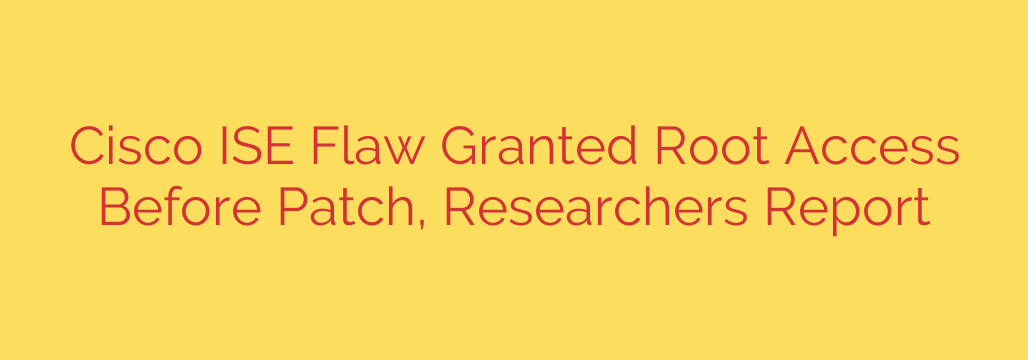
Urgent Security Alert: Patch Your Cisco ISE Now to Prevent Root-Level Takeover
A severe vulnerability has been uncovered in Cisco’s Identity Services Engine (ISE), a critical component for network security. This flaw, if exploited, could allow an unauthenticated attacker to gain complete, root-level control over the system, effectively handing them the keys to your network’s security infrastructure.
This is not a theoretical threat. Security researchers have confirmed that this vulnerability can be exploited by a remote attacker on the same network, making immediate action essential for all organizations using the affected software.
The Critical Flaw: Understanding CVE-2024-20356
The vulnerability is officially tracked as CVE-2024-20356 and carries a high severity rating. At its core, it is an unauthenticated command injection vulnerability located in the web-based management interface of Cisco ISE.
In simple terms, this means an attacker does not need a valid username or password to exploit the flaw. By sending a specially crafted HTTP request to the device, they can trick the system into executing malicious commands with the highest possible privileges—root access. This is possible because the system fails to properly validate user-supplied data before processing it.
The Alarming Impact: Why Root Access is a Game-Changer
Cisco ISE acts as a central policy and access control point for many enterprise networks. It is the digital gatekeeper that decides who can connect to the network and what resources they can access. Gaining root access to this system is a worst-case scenario for several reasons:
- Total System Compromise: An attacker with root privileges has full administrative control. They can view, modify, or delete any file, install malicious software (like ransomware or spyware), and create new user accounts.
- Complete Network Bypass: With control over ISE, an attacker can alter or disable security policies, allowing unauthorized devices and users onto the network. They could grant themselves access to sensitive servers, financial data, and intellectual property.
- Persistent Presence: A skilled attacker can use root access to embed themselves deeply within the network, making detection and removal extremely difficult. They can cover their tracks by altering system logs.
- Lateral Movement: The compromised ISE server becomes a trusted launchpad for attacks on other critical systems within your network.
Essentially, compromising the network’s gatekeeper means compromising the entire network it protects.
Actionable Security Steps: How to Protect Your Network Now
Given the severity of this vulnerability, immediate and decisive action is required. If your organization uses Cisco ISE, you must assume you are a target and take the following steps.
1. Apply the Official Patch Immediately
Cisco has released software updates that address this vulnerability. This is the most important step you can take. Do not delay the patching process. Prioritize the deployment of these security updates across all of your affected Cisco ISE instances.
2. Verify Patch Installation
After deploying the patches, verify that the update was successful and that your systems are running the new, secured version. A “deploy and forget” approach is not sufficient for a threat of this magnitude.
3. Restrict Access to the Management Interface
As a crucial security best practice, the Cisco ISE management interface should never be exposed to the public internet. Access should be strictly limited to a secure, isolated management network. Implementing strong network segmentation and access control lists (ACLs) can provide a critical layer of defense and mitigate risk from unauthenticated vulnerabilities like this one.
4. Monitor Your Logs for Suspicious Activity
Review your system logs for any unusual or unauthorized activity, especially involving the web-based management portal. Look for unexpected reboots, new administrative accounts, or strange outbound network connections. While a sophisticated attacker may try to clear logs, evidence of a breach can sometimes still be found.
This vulnerability serves as a stark reminder that even the most robust security appliances require constant vigilance and proactive patch management. Taking swift action to patch this flaw is not just a recommendation—it is essential for maintaining the integrity and security of your entire network infrastructure.
Source: https://go.theregister.com/feed/www.theregister.com/2025/07/24/no_login_no_problem_cisco_flaw/








